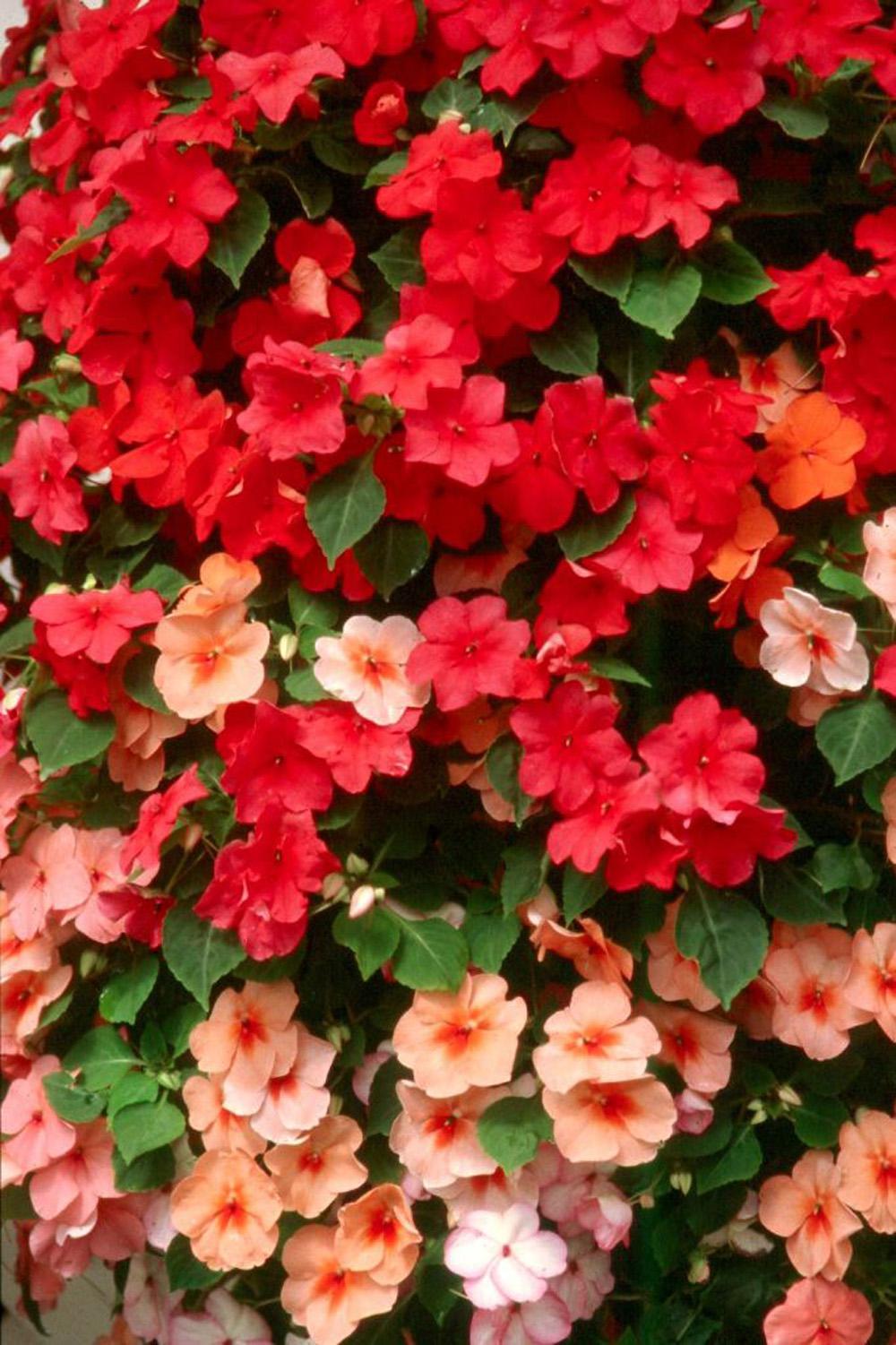Information Possibly Outdated
The information presented on this page was originally released on June 24, 2004. It may not be outdated, but please search our site for more current information. If you plan to quote or reference this information in a publication, please check with the Extension specialist or author before proceeding.
Impatiens mixes add pizzazz to landscapes
By Norman Winter
MSU Horticulturist
Central Mississippi Research & Extension Center
Every time I give a seminar, someone wants to know what flowers they can plant in the shade. I always answer first with impatiens. The impatiens is related to the old time touch-me-not and originates in East Africa.
When you consider that impatiens bloom from the time you plant them in the spring until the first hard frost, you are talking about an extremely good value for your landscape dollar. What other plant can you name that blooms for an average of 210 days?
You know I usually suggest planting single colors for maximum landscape impact. The new mixes showing up in impatiens, however, are changing my mind. There are some exceptional choices that will turn the shady landscape into a colorful paradise.
Speaking of paradise, that is the name of one of my favorite mixes, the Super Elfin Paradise Mix. It is so tropical-looking with shades of pink, red, rose and lavender.
You also must consider the Cancun Mix of Tempo Impatiens. This one will literally pop out of the shady garden, making everyone take notice. It leans toward shades of orange, apricot and red.
Next to try is the new Salsa Mix of semi-double Fanciful Impatiens. This mix has similar colors to the Cancun Mix, but the flowers take on a semi-double, or rose-like, form.
There are many more mixes available at garden centers, and even though we are in early summer, impatiens still can be planted for months of dazzling color.
Impatiens of all sorts do best in part shade or full shade in soil that is organic-rich, fertile and well-drained. Not everyone has such wonderful soil, so incorporate 3 to 4 inches of compost or humus to loosen the soil and provide a good home for your new plants.
While working the soil, incorporate a slow-release fertilizer like a 12-6-6 blend with minor nutrients at a rate of 2 pounds per 100 square feet of planting area. Space them 8 to 12 inches apart, planting at the same depth they are growing in the container.
Keep them watered and fed with light applications of fertilizer every four to six weeks, and by fall you will have a look that may rival the spring azalea bloom. If they should get leggy in mid-summer, don't be afraid to cut them back to as little as 6 to 8 inches. They will respond favorably with new growth and even more blossoms.
Try growing impatiens as understory plantings to bananas and gingers, and use in combination with hostas, coleus and caladiums.
Impatiens come in a variety of heights. Miniature varieties that reach only 10 inches include Firefly, Little Lizzy and Pixie. Accent, Cajun, Dazzler and Super Elfin are all known to approach 15 to 16 inches. Slightly taller are Showstopper and Tempo, which can reach 2 feet.
Those known for patterned flowers are Mosaic, Swirl and Stardust. In addition to the mixes, try the new rose form impatiens like Fiesta, the more compact Fiesta Ole and Tioga.
If you've got a shady situation at your house, liven it up with impatiens. It's not too late.




